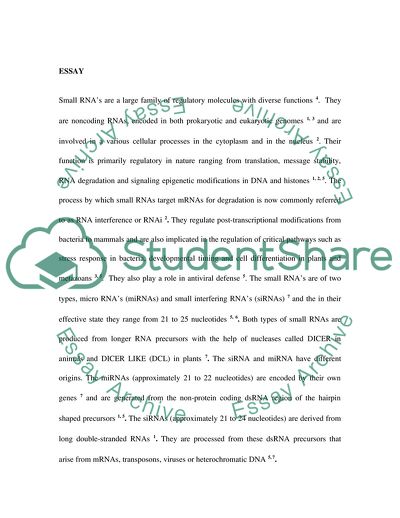Cite this document
(Small RNA Biogenesis and Role in Gene Expression Regulation Essay, n.d.)
Small RNA Biogenesis and Role in Gene Expression Regulation Essay. https://studentshare.org/medical-science/1713024-small-rna-biogenesis-and-role-in-gene-expression-regulation
Small RNA Biogenesis and Role in Gene Expression Regulation Essay. https://studentshare.org/medical-science/1713024-small-rna-biogenesis-and-role-in-gene-expression-regulation
(Small RNA Biogenesis and Role in Gene Expression Regulation Essay)
Small RNA Biogenesis and Role in Gene Expression Regulation Essay. https://studentshare.org/medical-science/1713024-small-rna-biogenesis-and-role-in-gene-expression-regulation.
Small RNA Biogenesis and Role in Gene Expression Regulation Essay. https://studentshare.org/medical-science/1713024-small-rna-biogenesis-and-role-in-gene-expression-regulation.
“Small RNA Biogenesis and Role in Gene Expression Regulation Essay”. https://studentshare.org/medical-science/1713024-small-rna-biogenesis-and-role-in-gene-expression-regulation.


